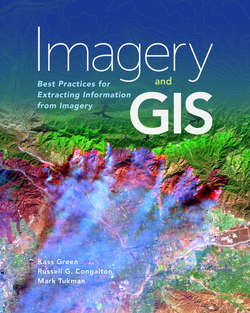Читать книгу Imagery and GIS - Kass Green - Страница 41
На сайте Литреса книга снята с продажи.
Different Types of Platforms
ОглавлениеGeosynchronous — 22,236 miles
Satellites that match Earth’s rotation appear stationary in the sky to ground observers. While most commonly used for communications, geosynchronous orbiting satellites like the hyperspectral GIFTS imager are also useful for monitoring changing phenomena such as weather conditions. NASA’s Syncom, launched in the early 1960s, was the first successful “high flyer.”
Sun synchronous — 375-500 miles
Satellites in this orbit keep the angle of sunlight on the surface of the earth as consistent as possible, which means that scientist can compare images from the same season over several years, as with Landsat imagery. This is the bread-and-butter zone for earth observing sensors.
Atmospheric satellite — 100,000 feet
Also known as pseudo-satellites, these unmanned vehicles skim the highest edges of detectable atmosphere. NASA’s experimental Helios craft measured solar flares before crashing in the Pacific Ocean near Kauai.
Jet aircraft — 90,000-30,000 feet
Jet aircraft flying at 30,000 feet and higher can be flown over disaster areas in a very short time, making them a good platform for certain types of optical and multispectral image applications.
General aviation aircraft — 100-10,000 feet
Small aircraft able to fly at low speed and low altitude have long been the sweet spot for high-quality aerial and orthophotography. From Cessnas to ultralights to helicopters, these are the workhorse of optical imagery.
Drones — 100-500 feet
Drones are the new kid on the block. Their ability to fly low, hover, and be remotely controlled offer attractive advantages for aerial photography, with resolution down to sub-1 inch. Military UAVs can be either smaller drones or actual airplanes.
Ground based/handheld — ground level
Increasingly, imagery taken at ground level is finding its way into GIS workflows. Things like Google Street View, HERE street-level imagery, and Mapillary; handheld multispectral imagers; and other terrestrial sensors are finding applications in areas like pipelines, security, tourism, real estate, natural resources, and entertainment.
